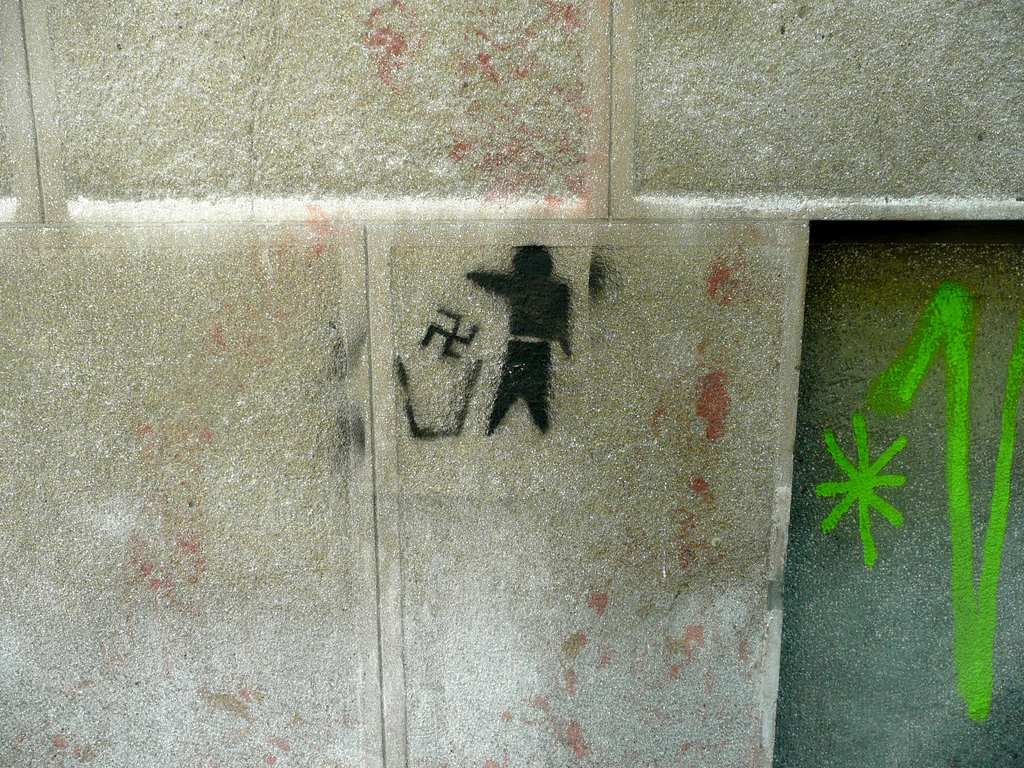The interwar years were the golden age of political imagery. As during the revolutionary era of the late-18th Century, the rise of new mass movements was accompanied by an equally potent visual vocabulary, disseminated via new technologies that could reach potential supporters like never before. In contrast to earlier eras, however, the 1920s and 30s did not see Left-wing movements become the sole or even primary beneficiaries of these changes – rather, it was the nascent radical-Right that proved most adept at image-management. By the outbreak of the Second World War, fascist parties across Europe had established a visual identity to rival that of the revolutionary Left.
Some of this success was undoubtedly down to a conscious effort by fascists to imitate their communist enemies; block colours and monochrome depictions of glorious leaders were co-opted directly from the Leninist propaganda. Yet there were other ingredients in this cocktail. In the wake of the First World War and its unprecedented mobilisation of civilian populations into the armed forces, the uniforms of national militaries were a universally recognisable sartorial touchstone. Intertwined with this, the vivid aesthetic of futurism that had taken the art world by storm in the 1910s – celebrating mechanisation, motion and violence – dovetailed perfectly with fascist ideology. (It is no accident that many leading Italian futurists became early supporters of Mussolini’s Blackshirts.)
The radical-Right is more popular now than at any time since 1945, but the fact that a casual observer could easily miss this is, in no small part, due to the conspicuous absence of such a vivid aesthetic. The Front National is in spitting distance of the French presidency, Law and Justice is fast assimilating the independent institutions of the Polish state, and an openly neo-Nazi party is active in Greece – but where are the uniforms? Where are the rippling flags and flanks of immaculate and identical loyalists proclaiming the dominance of the fatherland? What is most remarkable is not the visual identity of the new radical-Right, but its visual similarity with the political mainstream.
It is tempting to conclude that the absence of swastikas and helmets is evidence of a lack of extremism; that the new radical-Right, though offensive and populist, essentially exists within the bounds of the democratic mainstream. That would be a dangerous error. Another explanation recommends itself: after decades languishing in the political outer darkness, these movements have become much more adept at communicating to ordinary citizens. If the fascist aesthetics of the 1920s and 30s exploited the milieu of socialism, militarism and the modernist avant-garde which made up the day-to-day life of so many Europeans, their successors today have stepped into the visual mode of early-21st Century society. Armbands are out; suits and ties are in.
The leaders of the new radical-Right have charted a remarkably successful course between two poles, claiming to voice the truths that mainstream politicians refuse to acknowledge whilst remaining familiar enough in their dress and manner so as not to alarm. Of course, there are still fringe elements with paramilitary leanings and a fondness for the old fascist iconography, but they are not the ones that should concern us. It is their fellow-travellers hiding in plain sight that pose the real threat.
Download the article in PDF here
James Bartholomeusz (1992) is from the United Kingdom and is a policy officer at the Project for Democratic Union.


